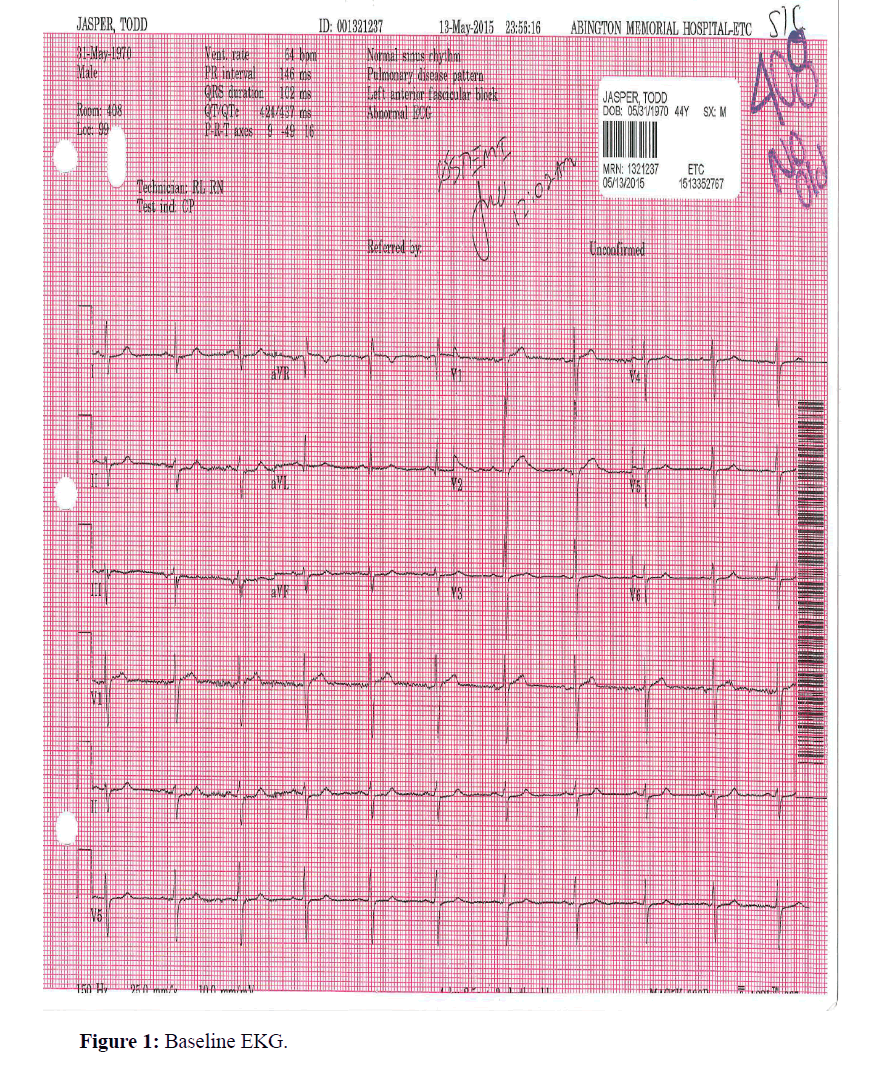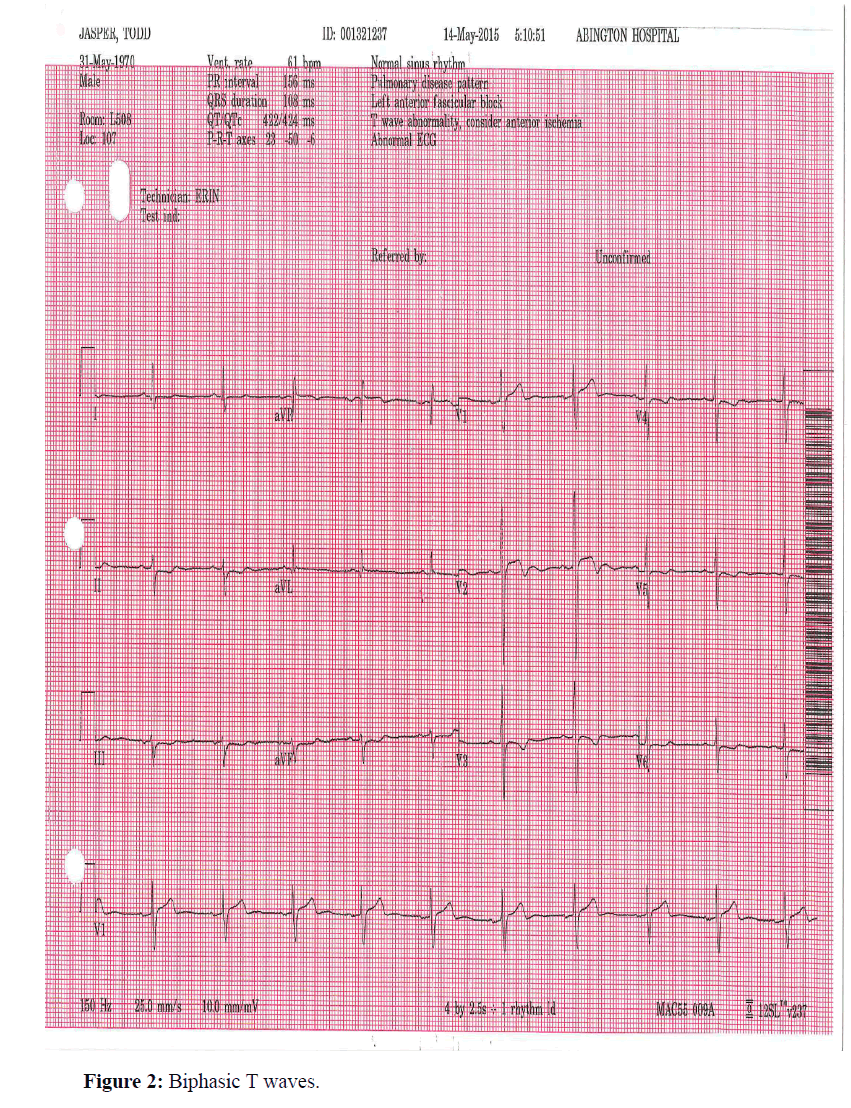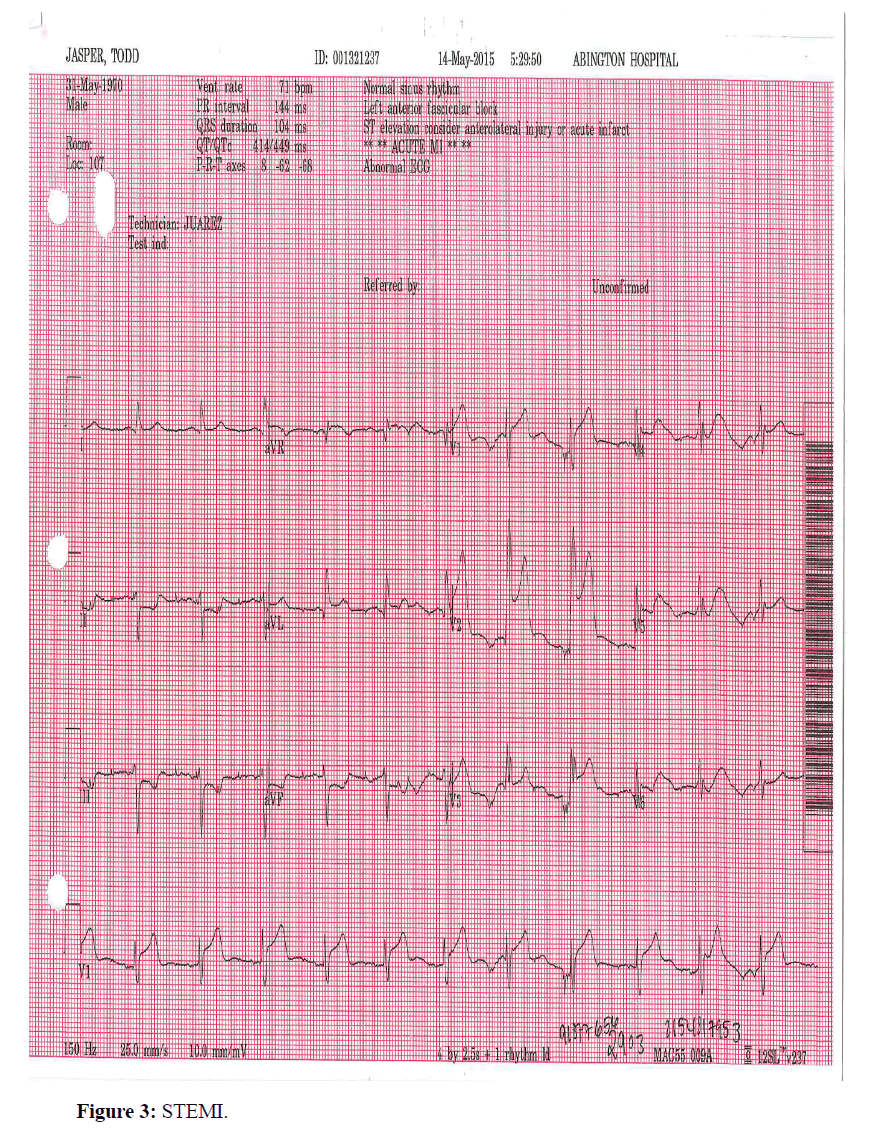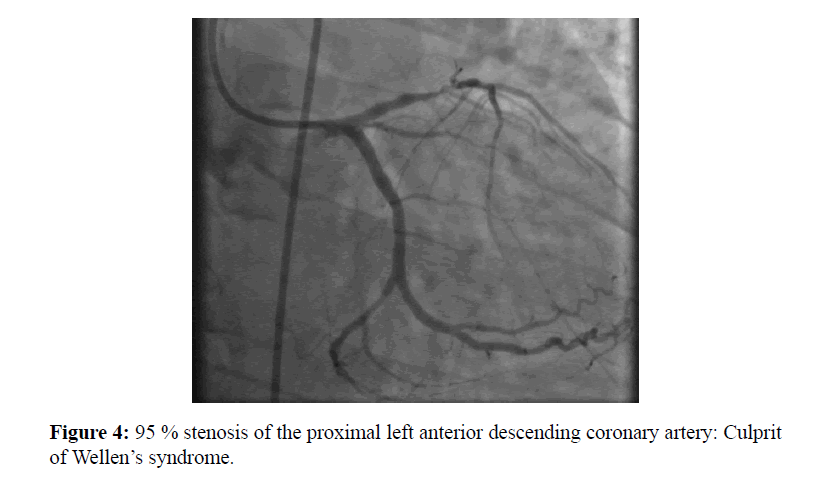Respect Biphasic T waves
Fatima Khan, Irfan Ahsan, Asoka Balaratna
Fatima Khan, Irfan Ahsan*, Asoka Balaratna
Department of Internal Medicine, Abington Jefferson Health, USA
- *Corresponding Author:
- Irfan Ahsan
Department of Internal Medicine
Abington Jefferson Health, USA
Tel: 7165332687
E-mail: irfan.ahsan@jefferson.edu
Clinical Presentation
A 44-year-old male introduced to emergency with discontinuous, exertional mid-sternal mid-section torment of one-week length assuaged with rest. He got ibuprofen and nitro-glycerine. Introductory electrocardiogram (EKG) demonstrated no confirmation of ischemia. Troponin I was 0.16 ng/ml (typical <0.10 ng/ml). After three hours, he had a repeat of mid-section torment which settled suddenly. EKG in agony free period demonstrated biphasic T-waves in lead V2-V4. No extra medicines were directed. After two hours, the patient created intermittent mid-section agony and EKG showed ST-portion rise in the anterolateral leads with complementary changes in sub-par leads. Eminent coronary angiography indicated 95% stenosis of the proximal left foremost dropping coronary supply route. Effective re-vascularized with medication eluting stents was performed. The learning and acknowledgment of biphasic T-waves in foremost leads (Wellen's disorder) is basic for early heparinization and coronary revascularization to presumably forestall movement of NSTEMI to front divider ST-Elevation MI (STEMI) (Figures 1-4).
Open Access Journals
- Aquaculture & Veterinary Science
- Chemistry & Chemical Sciences
- Clinical Sciences
- Engineering
- General Science
- Genetics & Molecular Biology
- Health Care & Nursing
- Immunology & Microbiology
- Materials Science
- Mathematics & Physics
- Medical Sciences
- Neurology & Psychiatry
- Oncology & Cancer Science
- Pharmaceutical Sciences




